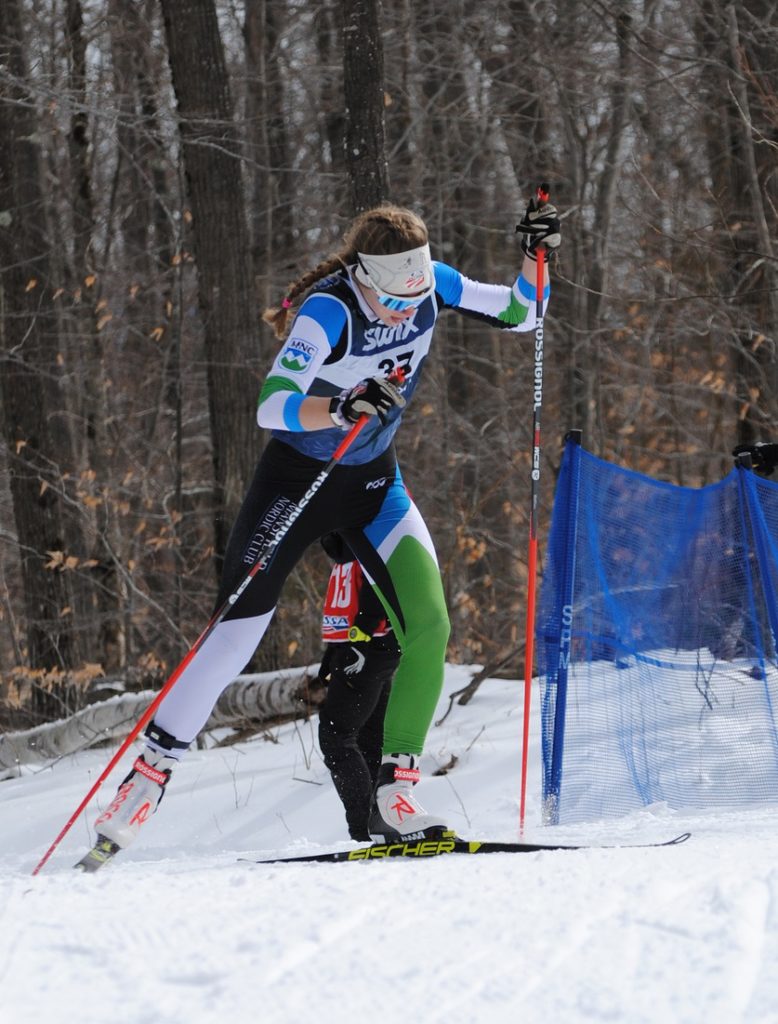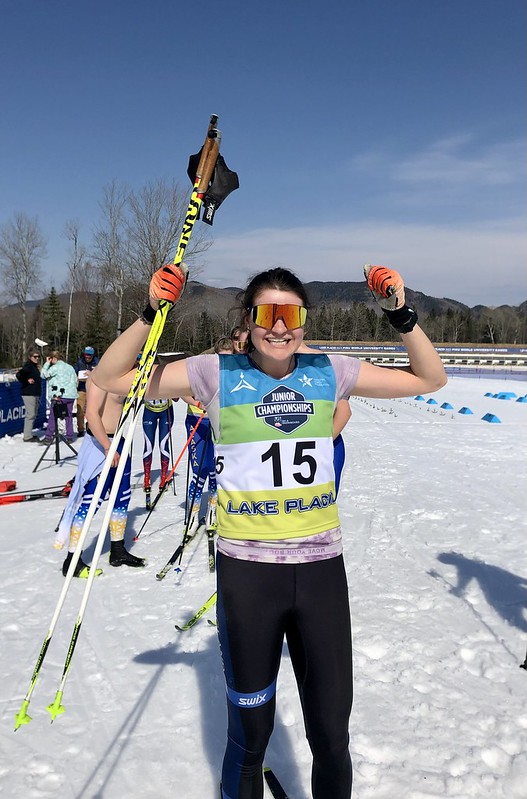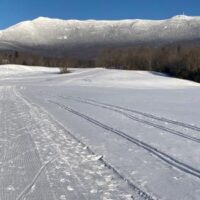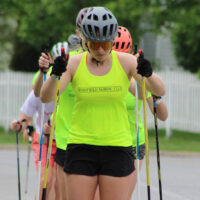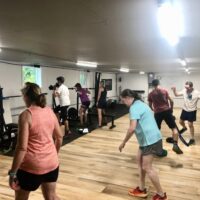It has been a jam-packed week, with action all over the place from running to skiing to biathlon. The humidity has been brutally challenging, but as sports author Steve Magness writes, “heat and humidity are the poor man’s altitude” so we are getting a bit of an early acclimation in preparation for our camp in Park City, UT next week.
We’ve tried to take all sorts of good measures to remain functional in the heat. Lots of hydration (especially Capri Sun aka “suns” at practice) as well as the occasional towel soaked in ice water around the neck.
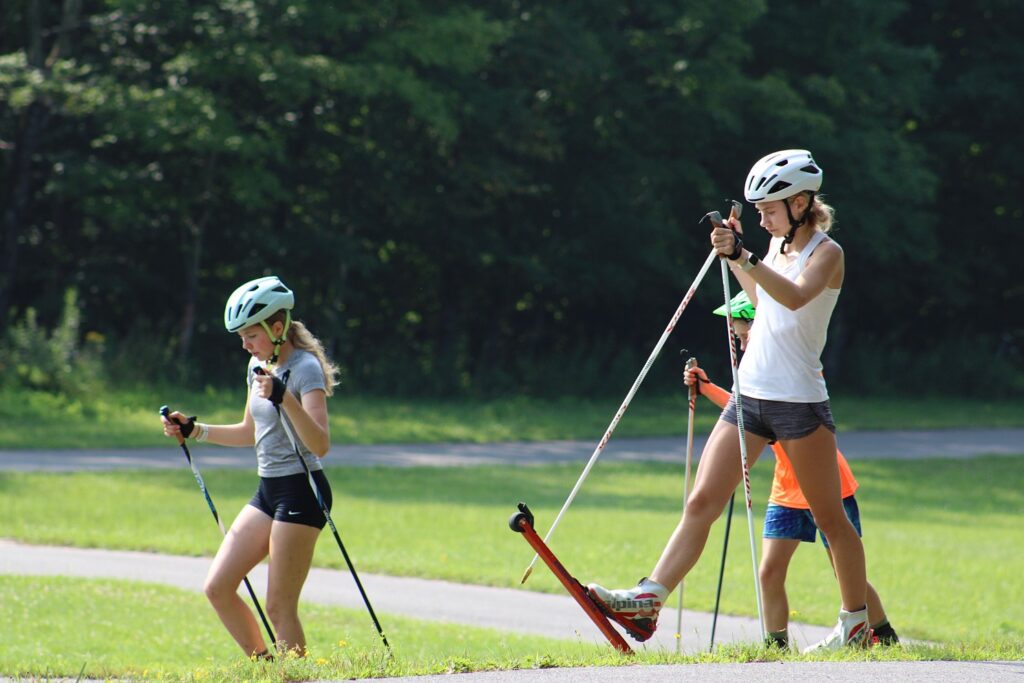
Rolling through the heat at the Range
While the flooding isn’t exactly ideal, we are thankful to have a lot of water sources near almost every spot we train at. The Winooski was a little muddy the other day, but that didn’t stop us from braving the big jump off the Long Trail footbridge into the cool(ish) waters below.
By the time you climbed back up the banks and steps to the bridge after one jump, you were already sweaty enough to make the next splash right away.
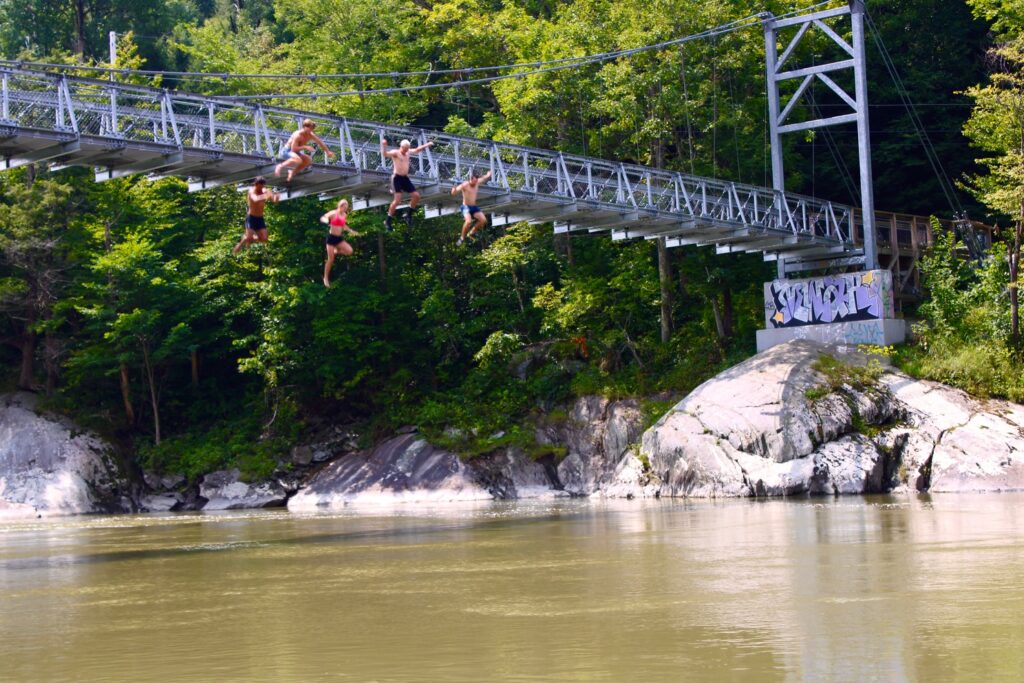
Niko, Lorenzo, Kate, Eli and Adam make the leap
That river jumping excursion took place right after the Bolton uphill run test, a great marker of our summer. We had a collection of first-time runners of this test (Acadia, Annalise, Mia) and some sweet PR efforts, notably Lorenzo with a 47 second personal best!
At the top we enjoyed some watermelon and savored the hazy view from the summit tower, and then took our leisurely time on the descent, as is our style.
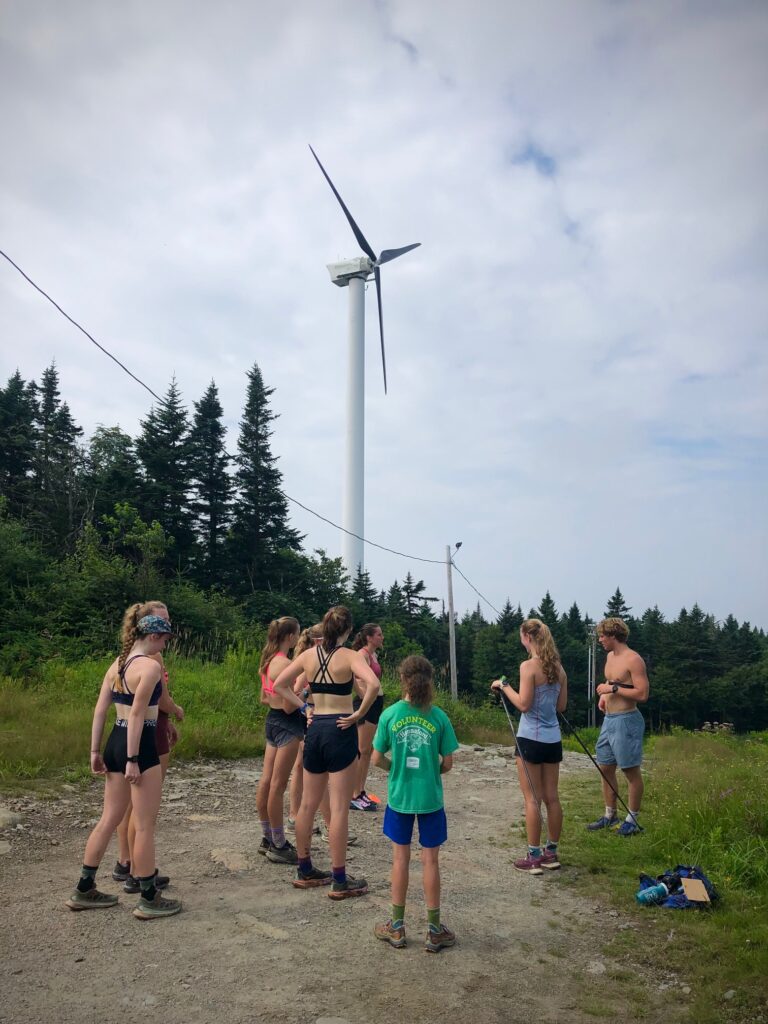
Catching up at the finish line
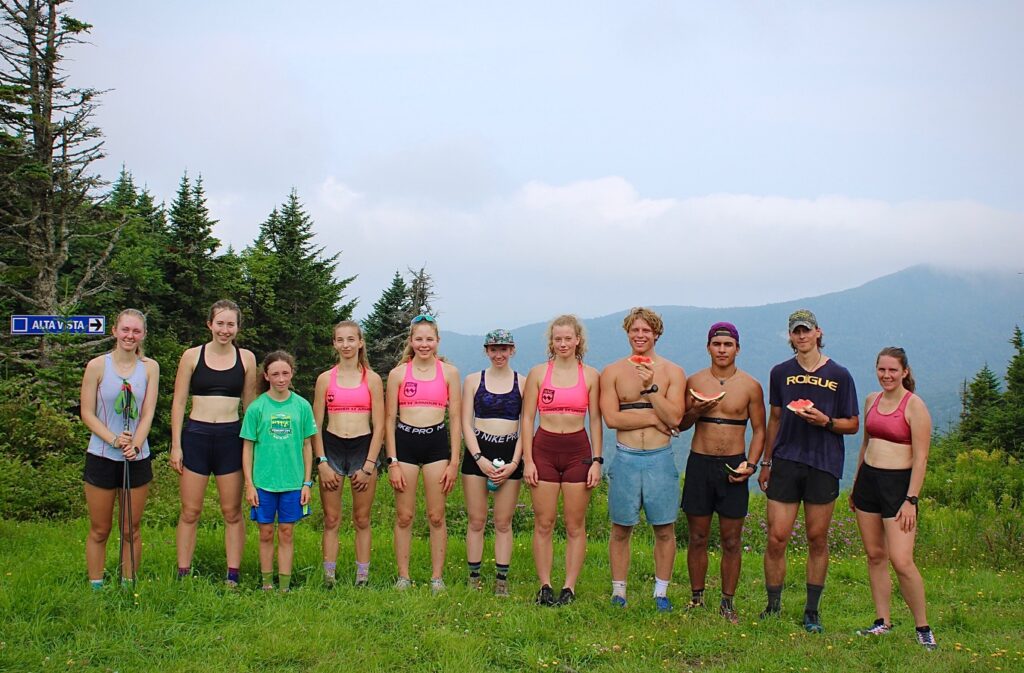
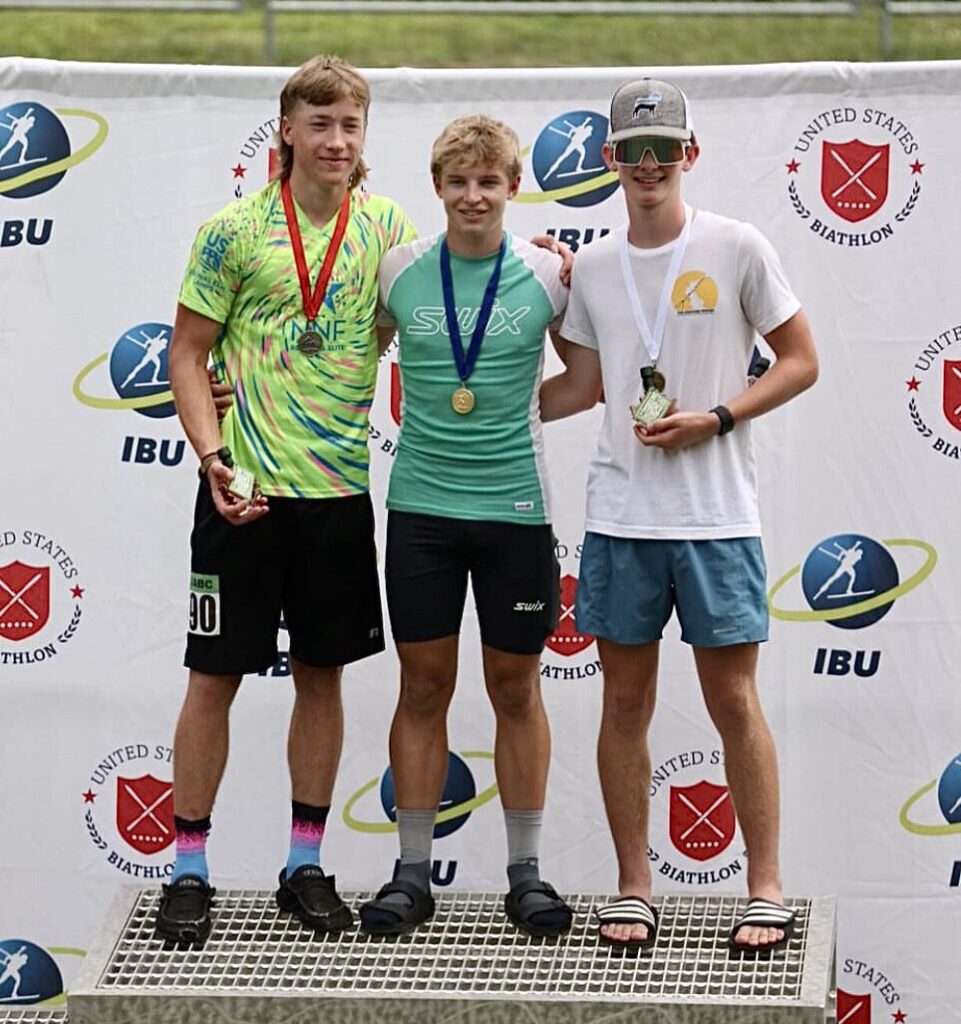
Taylor hitting targets and skiing fast (Team SoHo photo)
Earlier in the week was the double pole test, with some equally impressive and solid performances. Astrid and Gillian were both just a hair off the course record, while general improvement across the board in technique and times was great to see.
But wait, there were more races happening too! Instead of having the ultimate fun of running up a mountain on Saturday, the EABC athletes were competing in the Summer Biathlon Nationals at the Range on Sat/Sun. Taylor was on the podium Saturday, and MNC skiers were all across the event as Taylor, Pat, Seven, and Liam raced it out.
Lots of MNC faces were also helping the event run smoothly, from Coach Liz (timing) to Coach Rosemary (volunteer coordinator) and more, it was a good display of our Jericho-area ski community.
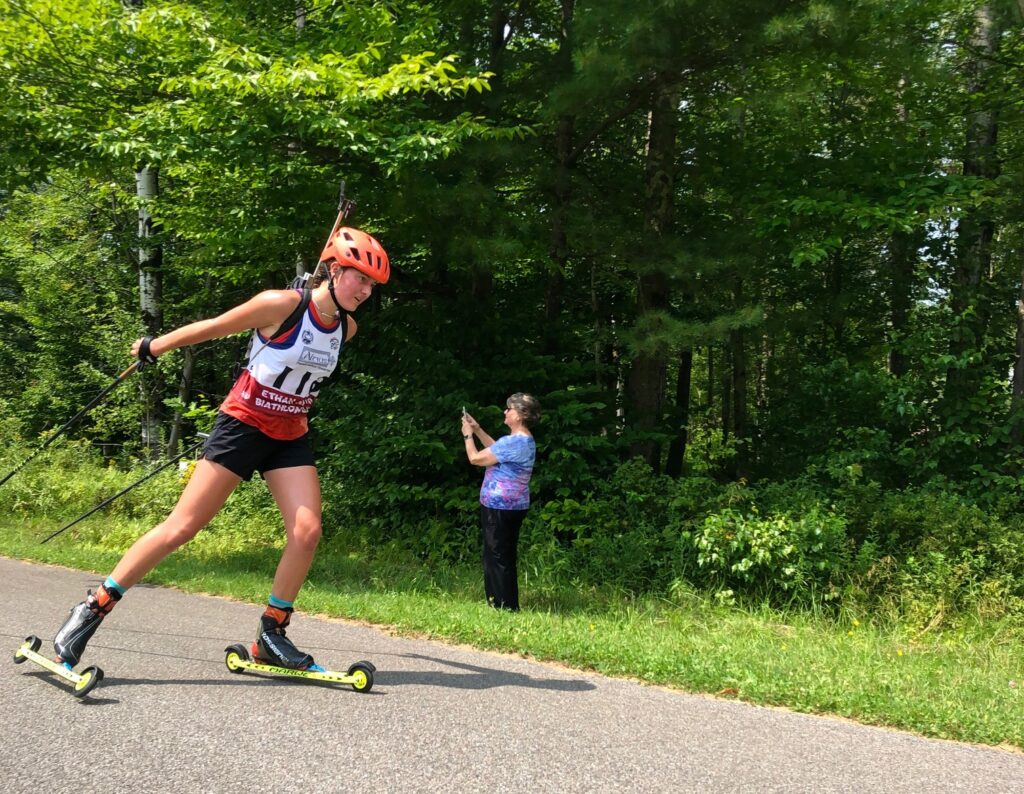
Seven with some good dynamic skiing
Next up is a bit of a more “typical” week before we start thinking about fall sports, Rocky Mountain Camp, and the changing of the seasons.
